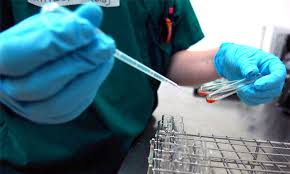
Breaking News
 Currency Regime Change: Is Dollar Dominance Dead?
Currency Regime Change: Is Dollar Dominance Dead?
 Hungary's Orban Seeks More 'Cheap' Russian Oil & Gas In Warm Meeting With Putin
Hungary's Orban Seeks More 'Cheap' Russian Oil & Gas In Warm Meeting With Putin
 How Zionism was sold to the world
How Zionism was sold to the world
 Documents Stuffed Into Burn-Bags At FBI HQ To Be Made Public: Kash Patel
Documents Stuffed Into Burn-Bags At FBI HQ To Be Made Public: Kash Patel
Top Tech News
 Latest Comet 3I Atlas Anomolies Like the Impossible 600,000 Mile Long Sunward Tail
Latest Comet 3I Atlas Anomolies Like the Impossible 600,000 Mile Long Sunward Tail
 Tesla Just Opened Its Biggest Supercharger Station Ever--And It's Powered By Solar And Batteries
Tesla Just Opened Its Biggest Supercharger Station Ever--And It's Powered By Solar And Batteries
 Your body already knows how to regrow limbs. We just haven't figured out how to turn it on yet.
Your body already knows how to regrow limbs. We just haven't figured out how to turn it on yet.
 We've wiretapped the gut-brain hotline to decode signals driving disease
We've wiretapped the gut-brain hotline to decode signals driving disease
 3D-printable concrete alternative hardens in three days, not four weeks
3D-printable concrete alternative hardens in three days, not four weeks
 Could satellite-beaming planes and airships make SpaceX's Starlink obsolete?
Could satellite-beaming planes and airships make SpaceX's Starlink obsolete?
 First totally synthetic human brain model has been realized
First totally synthetic human brain model has been realized
 Mach-23 potato gun to shoot satellites into space
Mach-23 potato gun to shoot satellites into space
 Blue Origin Will Increase New Glenn Thrust 15-25% and Make Rocket Bigger
Blue Origin Will Increase New Glenn Thrust 15-25% and Make Rocket Bigger
 Pennsylvania Bill – 'Jetsons Act' – Aims To Green-Light Flying Cars
Pennsylvania Bill – 'Jetsons Act' – Aims To Green-Light Flying Cars
New Blood Test Can Detect Dozens of Different Cancers With 99.4% Accuracy

A new series of tests is now showing that this exciting blood test can screen for numerous types of cancer with a stunningly high degree of accuracy.
The test, developed by GRAIL, Inc., uses next-generation sequencing technology to probe DNA for tiny chemical tags (methylation) that influence whether genes are active or inactive.
When researchers from the Dana-Farber Cancer Institute applied the test to nearly 3,600 blood samples—some from patients with cancer, some from people who had not been diagnosed with cancer at the time of the blood draw—the test successfully picked up a cancer signal from the cancer patient samples, and correctly identified the tissue from where the cancer began (the tissue of origin).
The test's specificity—its ability to return a positive result only when cancer is actually present—was high, as was its ability to pinpoint the organ or tissue of origin, researchers found.
The new test looks for DNA, which cancer cells shed into the bloodstream when they die. In contrast to "liquid biopsies," which detect genetic mutations or other cancer-related alterations in DNA, the technology focuses on modifications to DNA known as methyl groups. Methyl groups are chemical units that can be attached to DNA, in a process called methylation, to control which genes are "on" and which are "off." Abnormal patterns of methylation turn out to be, in many cases, more indicative of cancer—and cancer type—than mutations are. The new test zeroes in on portions of the genome where abnormal methylation patterns are found in cancer cells.
"Our previous work indicated that methylation-based assays outperform traditional DNA-sequencing approaches to detecting multiple forms of cancer in blood samples," said the study's lead author, Geoffrey Oxnard of Dana-Farber. "The results of the new study demonstrate that such assays are a feasible way of screening people for cancer."
In the study, investigators analyzed cell-free DNA (DNA that had once been confined to cells but had entered the bloodstream upon the cells' death) in 3,583 blood samples, including 1,530 from patients diagnosed with cancer and 2,053 from people without cancer. The patient samples comprised more than 20 types of cancer, including hormone receptor-negative breast, colorectal, esophageal, gallbladder, gastric, head and neck, lung, lymphoid leukemia, multiple myeloma, ovarian, and pancreatic cancer.
The overall specificity was 99.4%, meaning only 0.6% of the results incorrectly indicated that cancer was present.
Furthermore, the sensitivity of the assay for detecting pre-specified high mortality cancers (the percent of blood samples from these patients that tested positive for cancer) was 76%. Within this group, the sensitivity was 32% for patients with stage I cancer; 76% for those with stage II; 85% for stage III; and 93% for stage IV. Sensitivity across all cancer types was 55%, with similar increases in detection by stage. For the 97% of samples that returned a tissue of origin result, the test correctly identified the organ or tissue of origin in 89% of cases.
Detecting even a modest percent of common cancers early could translate into many patients who may be able to receive more effective treatment if the test were in wide use, Oxnard remarked.



